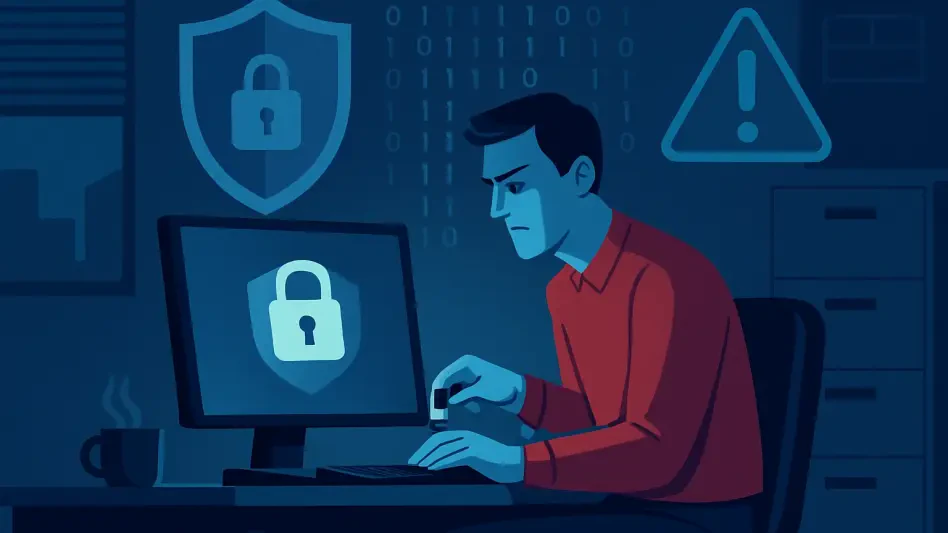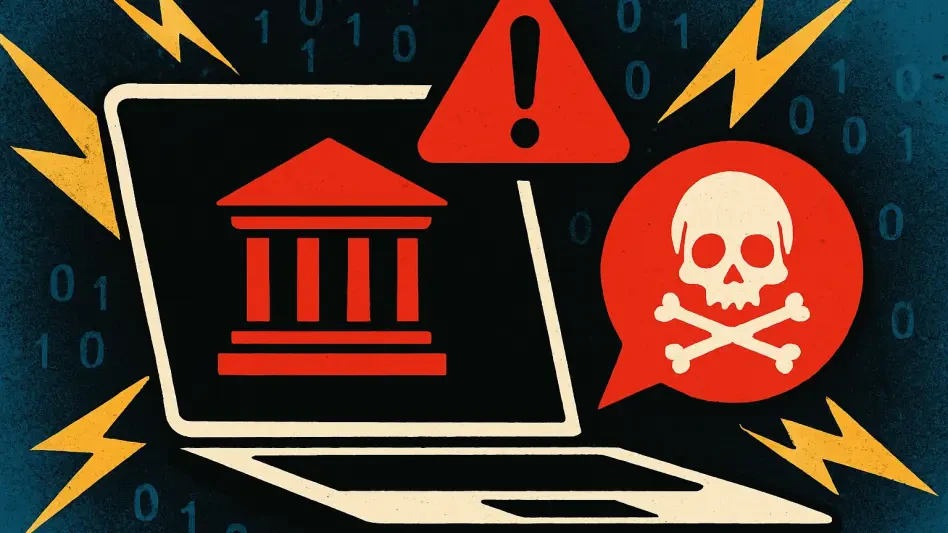In an era where remote work has become a predominant mode of operation for many organizations, digital meeting platforms like Zoom have become indispensable tools for communication. However, this reliance also presents opportunities for cybercriminals. A sophisticated phishing campaign is leveraging fake Zoom call invitations to steal workplace credentials. This threat skillfully exploits the trust users have in established brands like Zoom, using urgent email subjects such as “URGENT – Emergency Meeting” to lure individuals into a trap. The phishing emails contain links that navigate users to fraudulent pages mimicking the familiar Zoom interface, complete with deceptive hyperlinks and masked URLs. Such webpages often include interactive elements to further convince users of their legitimacy.
Once users are enticed into attempting to reconnect to a faux meeting after encountering a fabricated connection error, they find themselves on a malicious landing page. This page replicates the Zoom login interface, sometimes with pre-filled email fields to coax users into submitting their credentials. The consequences of falling victim to these cleverly designed scams are dire, as attackers can obtain sensitive data such as credentials, IP addresses, and location information. This data can then be used to infiltrate enterprise systems, leading to lateral movements, data breaches, and Advanced Persistent Threats (APTs), culminating in potentially significant financial and reputational losses for organizations.
Understanding Phishing Techniques
Luring Victims with Urgent Messages
The phishing campaign targeting Zoom users is notably effective because it preys on human psychology, specifically the fear of missing out on crucial meetings. By crafting email subjects that scream urgency, such as “URGENT – Emergency Meeting,” cybercriminals compel recipients to act swiftly without proper scrutiny of the email content. Once users click on the links within these emails, they are directed to meticulously designed fake pages that replicate Zoom’s interface. These pages don masks of legitimacy by using deceptive hyperlinking and URL masking, reinforcing the illusion of authenticity. Adding to the deception, some pages even incorporate interactive participant features to bolster user confidence in the site’s legitimacy.
Upon encountering a fictional connection error and attempting to regain access, users unwittingly land on sites disguised as Zoom’s login interfaces. To induce trust, these phishing pages may pre-populate email fields, making it appear as though the system recognizes them. This illusion nudges users to provide their passwords, thinking they are returning to an ongoing meeting. The sleek design and familiar elements of these fake pages are crafted to bypass the user’s built-in skepticism, leading them to unknowingly divulge sensitive information.
Replicating Visual and Interactive Identifiers
Beyond urgent messaging, the phishing scheme meticulously simulates Zoom’s visual and interactive components to create a believable facade. Cybercriminals employ cutting-edge techniques to craft pages that closely align with Zoom’s authentic look and functionality, employing logos, color schemes, and interactive features that mirror the genuine platform. By embedding interactive elements typical of a real Zoom meeting, such as participant lists or chat functions, these fake pages engender a sense of normalcy and authenticity. As users navigate these familiar components, their likelihood of detecting discrepancies diminishes significantly.
Link masking plays a pivotal role in these campaigns, as the genuine appearance of the URL can mislead users into trusting the site. Cybercriminals proficiently manipulate hyperlinks, masking the true destination behind what appears to be legitimate addresses. Users, deceived by this layer of digital disguise, unmindfully interact with the platform, entering credentials they’d typically share within a trusted environment. As soon as users fall prey to this elaborate deception, their personal details and access credentials are swiftly exfiltrated, setting the stage for more severe intrusions.
Mitigating the Threat
Awareness and Employee Training
The complex landscape of phishing scams targeting digital meeting platforms underscores the necessity of proactive measures to mitigate these threats effectively. Employee awareness and training serve as the first critical defense line in fostering security consciousness across organizations. Regular training sessions focusing on identifying phishing attempts and recognizing suspicious emails enhance employees’ ability to discern potential threats, reducing the risk of data breaches. Cultivating an organization-wide security culture involves teaching staff to verify email authenticity, check for secured HTTPS sites, and be cautious with unverified links.
Further, encouraging employees to double-check email sources, examining sender information and domain authenticity, becomes paramount in fending off targeted phishing schemes. Training programs should also include simulated phishing exercises that help employees practice identifying attacks in a controlled environment. By ensuring that staff members are regularly updated on the latest phishing trends and tactics, organizations reinforce their security posture against cyber threats. Continued vigilance and education are pivotal in counteracting the novel strategies cybercriminals deploy.
Implementing Multi-Factor Authentication and Secure Practices
Alongside fostering employee vigilance, employing technical safeguards like Multi-Factor Authentication (MFA) and robust cybersecurity practices are vital in defending against phishing attacks. Implementing MFA adds an additional security layer, requiring users to verify their identity through secondary means before gaining access to sensitive systems. This tactic significantly hampers unauthorized access attempts, as attackers would need more than just stolen credentials to breach defenses. Additionally, ensuring that MFA is widely adopted throughout the organization is essential for maximizing efficacy.
Organizations should also encourage a standard practice of accessing meeting platforms directly through verified gateways rather than relying on email links, which are susceptible to manipulation. By promoting usage of recognized URLs and secure methods for logging into digital services, companies bolster their ability to prevent unauthorized intrusions. Coupling these practices with continuous monitoring for abnormal login patterns helps in identifying and addressing security breaches swiftly. Fortifying networks with such protective measures minimizes vulnerabilities and strengthens overall security resilience.
Safeguarding Against Sophisticated Ploys
As remote work becomes the norm for many businesses, platforms like Zoom are vital for communication. However, this dependency also opens doors for cybercriminals. A cunning phishing scheme exploits fake Zoom meeting invitations to steal sensitive workplace credentials. By capitalizing on users’ trust in well-known brands like Zoom, these scams use urgent email subjects such as “URGENT – Emergency Meeting” to draw people into their trap. The phishing emails contain links directing users to bogus pages mimicking the genuine Zoom interface, with deceitful hyperlinks and disguised URLs. These fraudulent sites often include interactive elements, enhancing their authenticity.
After users are tricked into trying to reconnect following a phony connection error, they’re led to a sinister landing page resembling the Zoom login screen, sometimes pre-filled with email addresses to prompt users to enter their credentials. Falling for these scams can have severe consequences, as attackers gain access to sensitive data like credentials, IP addresses, and location details. This information allows them to breach enterprise systems, leading to data breaches and Advanced Persistent Threats (APTs), potentially causing significant financial and reputational damage to organizations.








